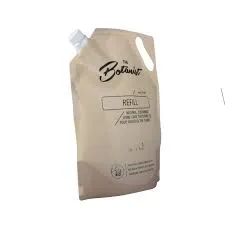- Afrikaans
- Albanian
- Amharic
- Arabic
- Armenian
- Azerbaijani
- Basque
- Belarusian
- Bengali
- Bosnian
- Bulgarian
- Catalan
- Cebuano
- chinese_simplified
- chinese_traditional
- Corsican
- Croatian
- Czech
- Danish
- Dutch
- English
- Esperanto
- Estonian
- Finnish
- French
- Frisian
- Galician
- Georgian
- German
- Greek
- Gujarati
- haitian_creole
- hausa
- hawaiian
- Hebrew
- Hindi
- Miao
- Hungarian
- Icelandic
- igbo
- Indonesian
- irish
- Italian
- Japanese
- Javanese
- Kannada
- kazakh
- Khmer
- Rwandese
- Korean
- Kurdish
- Kyrgyz
- Lao
- Latin
- Latvian
- Lithuanian
- Luxembourgish
- Macedonian
- Malgashi
- Malay
- Malayalam
- Maltese
- Maori
- Marathi
- Mongolian
- Myanmar
- Nepali
- Norwegian
- Norwegian
- Occitan
- Pashto
- Persian
- Polish
- Portuguese
- Punjabi
- Romanian
- Russian
- Samoan
- scottish-gaelic
- Serbian
- Sesotho
- Shona
- Sindhi
- Sinhala
- Slovak
- Slovenian
- Somali
- Spanish
- Sundanese
- Swahili
- Swedish
- Tagalog
- Tajik
- Tamil
- Tatar
- Telugu
- Thai
- Turkish
- Turkmen
- Ukrainian
- Urdu
- Uighur
- Uzbek
- Vietnamese
- Welsh
- Bantu
- Yiddish
- Yoruba
- Zulu
examples of embossing
Examples of Embossing A Craft that Elevates Design
Embossing is a popular technique used in a variety of crafts and industries, adding texture, depth, and a touch of elegance to materials. This versatile process involves creating raised designs or patterns on a surface, typically using heat and pressure to achieve stunning results. From paper to leather, embossing can transform the ordinary into the extraordinary, and its applications are limitless. In this article, we'll explore some notable examples of embossing and its implications in various fields.
1. Stationery and Invitations
One of the most common uses of embossing is in stationery and event invitations. Whether for weddings, corporate events, or personal celebrations, embossed details can significantly enhance the overall presentation. Embossed wedding invitations, for example, often feature intricate floral patterns or monograms, creating a tactile and visual experience for the recipient. The raised elements not only make the invitation stand out but also convey a sense of luxury and sophistication.
2. Packaging Design
In the world of packaging, embossing plays a crucial role in branding and product presentation. Companies often use embossed logos or decorative patterns on boxes and labels to attract consumers' attention. For instance, high-end cosmetics brands frequently emboss their packaging to indicate quality and exclusivity. A subtle embossed texture can enhance the visual appeal of a product, making it more desirable to potential buyers. In a competitive market, such details can differentiate a brand and foster customer loyalty.
Embossing is particularly popular in the production of leather goods. Designers often emboss logos, patterns, or textures onto leather products like wallets, handbags, and belts. This not only adds aesthetic value but also allows for personalization. Custom-embossed initials or symbols on a leather item can create a sense of ownership and uniqueness for the buyer. Moreover, embossed leather items often age well, with the patterns becoming more pronounced and appealing over time.
4. Bookbinding and Covers
examples of embossing

In the world of literature and publishing, embossing is a cherished craft used in bookbinding. Many hardcover books feature embossed titles or designs on the spine and cover, creating a tactile experience for readers. This technique not only enhances the book's visual appeal but also signifies its quality. Collectors often seek out embossed editions of classic novels or special publications, as these items carry a sense of history and craftsmanship.
5. Business Cards
In the realm of networking and professional branding, embossed business cards can leave a lasting impression. The tactile aspect of an embossed card can convey a sense of quality and attention to detail, which can be instrumental in business settings. An embossed logo or raised text can help a card stand out in a stack, making it more likely for potential clients or partners to remember the individual behind the card.
6. Interior Design
Embossing is not limited to paper and leather; it also finds its way into interior design. Textured wallpaper, embossed tiles, and raised patterns on furniture can add depth and interest to a space. For instance, an embossed wall feature can serve as a focal point in a room, drawing the eye and inviting exploration. In interior design, the use of embossing can help convey the desired ambiance, whether it’s a cozy, rustic feel or a sleek, modern aesthetic.
7. Promotional Materials
Businesses also utilize embossing in promotional materials such as brochures, flyers, and promotional gifts. An embossed logo or tagline on a flyer can enhance its visual impact and lend a sense of authority to the information presented. For promotional gifts, embossed designs on items such as notebooks or pens create a lasting impression and can serve as thoughtful corporate gifts that leave recipients feeling valued.
In summary, embossing is a multifaceted technique that transcends various industries and applications. From elevating personal stationery to enhancing packaging design, its capacity to add depth and texture makes it an invaluable tool in crafting memorable experiences. As technology advances and new methods emerge, the potential for innovation in embossing continues to grow. Whether in art, marketing, or everyday objects, embossing remains a powerful way to express creativity and capture attention. Its enduring appeal lies in its ability to combine functionality with aesthetics, turning mundane surfaces into works of art.













